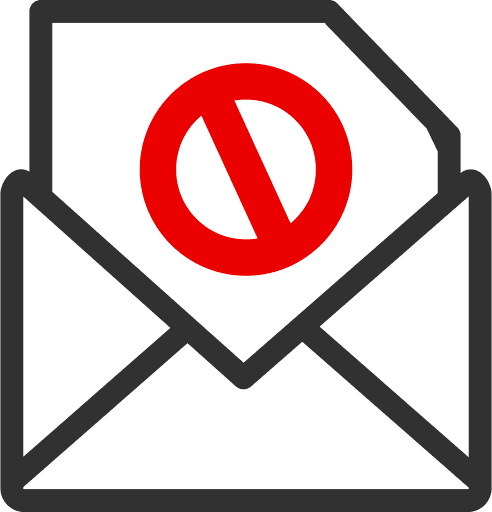Are you tired of constantly being bombarded with spam emails on your iPhone? Frustrated that your spam filter just isn’t doing its job properly? Well, fear not! We’ve got the solution for you.
In this groundbreaking article, we will delve into the common issues faced by iPhone users when it comes to their spam filters and provide you with the ultimate guide to fix them.
First things first, we’ll show you how to check for software updates. Often, a simple update can work wonders in improving the performance of your spam filter.
Next, we’ll walk you through adjusting your spam filter settings to ensure it’s at maximum efficiency.
Additionally, we’ll teach you how to mark emails as spam and manage blocked senders effectively.
But don’t worry if these steps don’t resolve the issue – we’ve got more tricks up our sleeve! We’ll also guide you on seeking additional support and troubleshooting methods that will have your iPhone’s spam filter working like a charm again.
Get ready to experience a safer and cleaner inbox – let’s dive in!
Common Issues with iPhone Spam Filters
One of the most frustrating issues with iPhone spam filters is that they sometimes fail to accurately categorize unwanted messages. This can lead to false positives, where legitimate emails are mistakenly marked as spam.
The spam filter accuracy is crucial for filtering out unwanted messages and protecting users from potential threats. However, when the filter fails to work effectively, it becomes a source of frustration and concern.
To ensure the spam filter effectiveness, there are several troubleshooting steps you can take. Start by checking for software updates on your iPhone. Apple regularly releases updates that include improvements to the spam filter system. By keeping your device updated, you increase the likelihood of better performance from the filter.
In addition to software updates, it’s important to regularly review and adjust your filter settings. Take some time to familiarize yourself with the options available and customize them according to your preferences. This will help fine-tune the filtering process and reduce instances of false positives.
By addressing these common issues with iPhone spam filters, such as false positives and filtering legitimate emails, you can enhance the overall effectiveness of your device’s security measures. Remember, staying proactive in managing your spam filter settings is essential for maintaining a safe digital environment on your iPhone without compromising on convenience or functionality.
Checking for Software Updates
To ensure your device is running smoothly and effectively, it’s essential to regularly check for software updates. By updating your iPhone’s software, you not only enhance its overall performance but also improve the accuracy of its spam detection and prevention system.
Keeping your software up to date ensures that any vulnerabilities or issues in the previous versions are patched, making it harder for spammers to bypass the filters. Apple constantly releases software updates that address security concerns and improve various features on their devices.
These updates often include enhancements to the spam filter algorithm, allowing it to better identify and block unwanted messages. Neglecting these updates may result in a less effective spam filter that fails to catch all potential threats.
By staying proactive with software updates, you demonstrate a commitment to keeping your device secure from malicious entities. It enables you to take advantage of the latest advancements in technology and maintain optimal performance levels.
Once you’ve updated your iPhone’s software, you can move on to adjusting your spam filter settings for further customization without compromising safety.
Adjusting Spam Filter Settings
Improve the effectiveness of your device’s spam filter by adjusting its settings to better suit your needs and preferences. Customizing filters allows you to have more control over what gets flagged as spam and what doesn’t. By fine-tuning these settings, you can reduce false positives, ensuring that important emails don’t end up in your spam folder.
One way to ensure that important contacts are never marked as spam is by whitelisting them. Whitelisting adds trusted contacts to a safe list, so their emails always go straight to your inbox. This helps avoid missing any critical messages from people or organizations you trust.
In addition to customizing filters and whitelisting contacts, it’s essential to actively manage your spam folder. Regularly check this folder for any legitimate emails that may have been mistakenly identified as spam. This ensures that no important information slips through the cracks.
Your device’s automatic spam detection is designed to identify and block unwanted emails effectively. However, adjusting the settings can help make it even more efficient at catching malicious content while allowing genuine messages through.
By customizing filters, whitelisting contacts, managing the spam folder, and optimizing automatic detection, you can enhance the accuracy of your iPhone’s spam filter. Once you’ve adjusted these settings accordingly, it’s time to move on to marking emails as spam without skipping a beat.
Marking Emails as Spam
Enhance the accuracy of your device’s spam filter by easily marking emails as spam, ensuring that unwanted messages are promptly identified and filtered out. By taking advantage of this feature, you can improve email security and protect yourself from potential threats.
Recognizing spam patterns is crucial in identifying suspicious messages. Look out for common signs such as misspellings, grammatical errors, or strange email addresses. If an email seems too good to be true or asks for personal information, it’s likely a phishing attempt.
To mark an email as spam on your iPhone, simply open the message and tap the ‘Mark’ option at the bottom of the screen. This action will not only move the message to your spam folder but also helps train your device’s filter to identify similar patterns in the future. Additionally, reporting spam emails directly to your email provider increases their ability to identify and block such messages system-wide.
Setting up email filters can further enhance your protection against unwanted emails by automatically moving them to designated folders or deleting them altogether. These filters can be customized based on specific criteria like sender address or keywords commonly found in spam emails.
By mastering these techniques for marking emails as spam, recognizing phishing attempts, and setting up effective filters, you can significantly improve the accuracy of your iPhone’s spam filter while safeguarding your inbox from potential threats.
Transitioning into managing blocked senders: Now that you’ve enhanced your device’s ability to recognize and filter out unwanted messages through marking emails as spam effectively…
Managing Blocked Senders
Take control of your inbox and prevent unwanted messages from reaching you by effectively managing blocked senders. In order to keep spam at bay, it’s important to understand how spam filter algorithms work. These algorithms analyze various factors such as email content, sender reputation, and user feedback to identify potential spam emails.
Regular updates are crucial to ensure that the spam filter is equipped with the latest techniques and patterns used by spammers. By regularly updating your iPhone’s software, you can ensure that these algorithms stay up-to-date and effective in blocking unwanted emails. Additionally, take some time to personalize your spam filter settings. By identifying common patterns in spam emails and adjusting your settings accordingly, you can enhance the accuracy of your spam filter.
Blocked senders play a significant role in determining which emails make it into your inbox. When you block a sender, their emails are automatically redirected to the spam folder or completely rejected. However, it’s essential to strike a balance between blocking unwanted senders and not inadvertently blocking legitimate ones.
To seek additional support and troubleshoot any issues with your iPhone’s spam filter, continue reading about seeking additional support and troubleshooting options in the next section.
Seeking Additional Support and Troubleshooting
If you encounter any issues with your iPhone’s spam filter or need additional support, there are various troubleshooting options available.
When it comes to seeking assistance, contacting Apple Support should be your first step. Their team of experts can guide you through the process of resolving any problems with your spam filter.
In addition to reaching out to Apple Support, there are other solutions worth considering. Third-party spam filter apps can provide an extra layer of protection and help enhance the performance of your iPhone’s built-in filter. These apps offer advanced features and customizable settings that allow you to tailor the spam filtering experience according to your preferences.
When trying to identify potential causes of spam filter issues, it’s important to consider factors like outdated software, incorrect settings, or even misconfigured email accounts. Restoring your iPhone settings to default could also help resolve any underlying issues affecting the spam filter’s functionality.
Furthermore, seeking advice from online forums can prove beneficial as well. Engaging with a community of fellow iPhone users who have faced similar challenges might provide valuable insights and alternative solutions that you may not have considered before.
By exploring these troubleshooting options and reaching out for support when needed, you can ensure that your iPhone’s spam filter is working properly and keep yourself safe from unwanted messages and potential threats.
Frequently Asked Questions
How do I check the spam folder on my iPhone?
To prevent spam on your iPhone, you can troubleshoot filter issues by checking the spam folder. Common reasons for malfunctions include outdated software or incorrect settings. Improve spam filtering by using third-party apps and reporting suspicious emails.
Can I whitelist specific email addresses to ensure they are not marked as spam?
To ensure important emails are not marked as spam, manage your whitelist settings. Accurate spam detection is crucial for email security on mobile devices. Improve your iPhone’s email security by customizing the spam filter settings.
Why am I still receiving spam emails even after marking them as spam?
You may still receive spam emails due to common reasons like sophisticated spam techniques and evolving spam filters. To improve filter effectiveness, avoid opening or replying to spam emails, manually add addresses to the filter, and consider your email provider’s filtering capabilities.
Is there a way to report spam emails directly from my iPhone?
To report spam emails directly from your iPhone, follow these steps: 1) Familiarize yourself with spam email prevention techniques and the importance of email security. 2) Learn common signs of a spam email. 3) Protect personal information from spam emails. 4) Take immediate action if your email account has been compromised. Stay safe!
Are there any third-party apps that can enhance the spam filtering capabilities of my iPhone?
Enhance your iPhone’s spam filtering capabilities with third-party apps like Truecaller and RoboKiller. These apps offer advanced features to prevent spam calls, block text messages, and identify phishing emails, ensuring a safer mobile experience.
Conclusion
Congratulations on taking the initiative to troubleshoot your iPhone’s spam filter! By following the steps outlined in this article, you’ve taken a proactive stance against unwanted emails.
Remember to regularly check for software updates and adjust your spam filter settings to ensure optimal performance. Don’t hesitate to mark any suspicious emails as spam and manage blocked senders effectively.
Should you encounter further issues, seek additional support and troubleshooting options. With these actions, you can reclaim control over your inbox and enjoy a hassle-free email experience on your iPhone!

